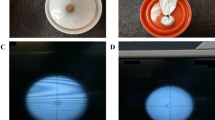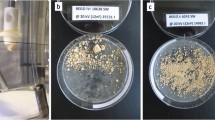Abstract
An experimental investigation was made of cavitation phenomena induced by underwater shock wave focusing applied to the extracorporeal microexplosion lithotripsy (microexplosion ESWL). Firstly an underwater microexplosion generated by detonation of a 10 mg silver azide pellet was studied and secondly underwater shock focusing and its induced cavitation phenomena were investgated. Underwater shock wave was focused by using a semi-ellipsoidal reflector in which a shock wave generated at the first focal point of the reflector was reflected and focused at the second focal point. It is found that an explosion product gas bubble did not produce any distinct rebound shocks. Meantime cavitation appeared after shock focusing at the second focal point where expansion waves originated at the exit of the reflector were simultaneously collected. A shock/bubble interaction is found to contribute not only to urinary tract stone disintegration but also tissue damage. The cavitation effect associated with the microexplosion ESWL was weaker in comparison with a spark discharge ESWL. The microexplosion ESWL is an effective method which can minimize the number of shock exposures hence decreasing tissue damage by conducting precise positioning of urinary tract stones.
Similar content being viewed by others
References
Blake JR, Taib BB, Doherty G (1986) Transient cavities near boundaries, part 1, rigid boundary. J Fluid Mech 170:479–497
Chahine GL (1981) Pressure generated by a bubble cloud collapse. ASME Cavitation and Polyphase Flaw Forum, St. Louis:27–31
Chaudhri MM, Field JE (1974) The role of rapidly compressed pockets in the initiation of condensed explosives. Proc R Soc Lond A 340:113–128
Chaussy CH, Schmidt E, Jocham D, Ferdes G, Brundel W, Forssmann B, Hepp W (1986) Extracorporeal shock wave lithotripsy, 2nd ed. Karger, Munich
Church CC (1989) A theoretical study of cavitation generated by an extracorporeal shock wave lithotripter. J Acoust Soc Am 86:215–227
Cole H (1948) Underwater Explosions. Prinston University Press
Coleman AJ, Sanders JE, Crum LA, Dyson M (1987) Acoustic cavitation generated by an extracorporeal shock wave lithotripter. Ultrasound Med Bol 13:69–76
Crum LA (1988) Cavitation microjets as a contribution in ESWL. J Urol 140:1587–1590
Crum LA, Fowlkes JB (1986) Acoustic cavitation generated by microse cond pulse of ultrasound. Nature 319:52–53
Dear JP, Field JE (1988a) A study of the collapse of arrays of cavities. J Fluid Mech 190:409–425
Dear JP, Field JE (1988b) High-speed photography of surface geometry effects in liquid/solid impact. J Appl Phys 63:1015–1021
Delius M, Moeller M, Vogel A, Brendel W (1988) Shock waves and cavitation. In: Ferrucci et al. (eds) Biliary Lithotripsy, Chicago, Yearbook
Gibson DC, Blake JR (1982) The growth and collapse of bubble near deformable surface. Appl Sci Res 38:215–224
Grönig H (1990) Past, present and future of shock focusing research. In: Takayama K (ed) Proc Int Workshop on Shock Wave Focusing, Shock Wave Research Center Tohoku University, pp 1–37
Hansson I, Mørch KA (1980) The dynamics of clusters in ultrasonic (vibratory) cavitation erosion. J Appl Phys 51:4651–4658
Heustler E, Kieter W (1975) Destruction of kidney stones by means of autofocused guided shock waves. 2nd European Congress on Ultrasonics in Medicine, Munich
Hunter PT, Finlayson B, Hirko RJ, Voreck WC, Walker R, Walck S, Nash M (1986) Measurement of shock wave pressure used for lithotripsy. J Urol 136:733–738
Ioritani N, Kuwahara M, Kambe K, Taguchi K, Saito T, Shirai S, Orikasa S, Takayama K, Lush PA (1990) Renal tissue damage induced by focused shock wave. In: Kim YW (ed) Proc 17th Int Sym on Shock Waves and Shock Tubes, Bethlehem PA 1989, pp 185–190
Jones IR, Edwards DH (1960) An experimental study on the forces generated by the collapse of transient cavities in water. J Fluid Mech 7:596–609
Kambe K, Kuwahara M, Kurosu S, Takayama K, Onodera O, Itoh K (1986) Underwater shock wave focusing: an application to extracoporeal lithotripsy. in: Bashader D, Hanson RK (eds) Proc 15th Int Sym on Shock Waves and Shock Tubes, Stanford 1985, pp. 641–647
Kuwahara M (1990) Extracorporeal shock wave lithotripsy: recent advanced strategy using piezoceramic shock wave generator. In: Takayama K (ed) Proc Int Workshop on Shock Wave Focusing, Shock Wave Research Center, Tohoku University, pp 65–89
Kuwahara M, Ioritani N, Kambe K, Taguchi K, Saito T, Igarashi M, Shirai S, Orikasa S, Takayama K (1990) Acoustic cavitation bubbles in the kidney induced by focused shock waves in extracorporeal shock wave lithotripsy (ESWL). In: Kim YW (ed) Proc 17th Int Sym on Shock Waves and Shock Tubes, Bethlehem PA 1989, pp 173–178
Kuwahara M, Ioritani N, Kambe K, Orikasa S, Takayama K (1991) Antimiss-shot control device for selective disintegration in extracoporeal shock wave lithotripsy. Shock Waves 1: 145–148
Lush PA (1983) Impact of a liquid mass on a perfectly plastic solid. J Fluid Mech 135:373–387
Lush PA, Tomita Y, Onodera O, Takayama K, Sanada N, Kuwahara M, Ioritani N, Kitayama O (1990) Air bubble-shock wave interaction adjacent to gelatine surface. In: Kim YW (ed) Proc 17th Int Sym on Shock Waves and Shock Tubes, Bethlehem PA 1989, pp 831–836
Nasr MB (1986) The evolution and dynamic of spark generated shock waves and their focusing by ellipsoidal reflectors in lithotripsy. Doctoral Thesis, University of Florida
Obara T (1992) Application of underwater shock focusing for medical application. Dr. Thesis, Tohoku University Graduate School
Plesset MS, Chapman RB (1971) Collapse of an initially spherical vapour cavity in the neighborhood of a solid boundary. J Fluid Mech 47:283–290
Rayleigh Lord (1917) On the pressure developed in a liquid during the collapse of a sphericai cavity. Phil Mag 34:94–98
Reichenbach H (1985) Private communication
Sanada N, Ikeuchi J, Takayama K, Onodera O (1984) Generation and propagation of cavitation induced shock waves in an ultrasonic vibratory testing. In: Archer RD, Milton BE (eds) Proc 14th Int Sym on Shock Tubes and Waves, Sydney 1983, pp. 405–412
Shima A, Takayama K, Tomita Y, Miura N (1981) An experimental study on effects of a solid wall on the motion of bubbles and shock waves in bubble collapse. Acustica 48:293–301
Shima A, Tomita Y, Gibson DC, Blake JR (1989) The growth and collapse of cavitation bubbles near the composite surface. J Fluid Mech 203:199–214
Sturtevant B (1990) The physics of shock focusing in the context of extracorporeal shock wave lithotripsy. In: Takayama K (ed) Proc Intl Workshop on Shock Wave Focusing, Shock Wave Research Center Tohoku University, pp 39–64
Takayama K, Esashi H, Sanada N (1984) Propagation and focusing of spherical shock waves produced by underwater microexplosions. In: Archer RD, Milton BE (eds) Proc 14th Int Sym on Shock Tubes and Waves, Sydney 1983, pp. 553–562
Takayama K (1988) Holographic interferometric study of shock wave propagation in two-phase flow. In: Grönig H (ed) Proc 16th Int Sym on Shock Tubes and Waves, Aachen 1987, pp. 51–62
Takayama K, Onodera O, Obara T, Kuwahara M, Kitayama O (1991) Fundamental studies of application of underwater shock wave focusing to medicine. Trans JSME Ser B 57:2285–2292
Tomita Y, Shima A (1977) On the behavior of a spherical bubble and the impulse pressure in a viscous compressible liquid. Bulletin of the Japan Society of Mechanical Engineers 20:1453–1460
Tomita Y, Shima A (1986) Mechanisms of impulsive pressure generation and damage pit formation by bubble collapse. J Fluid Mech 169:535–564
Tomita Y, Shima A (1990) High-speed photographic observation of laserinduced cavitation bubbles in water. Acustica 71:161–171
Tomita Y, Shima A, Sato K (1990) Dynamic behavior of two-laserinduced bubbles in water, Appl Phys Lett 57:234–236
Tomita Y, Shima A, Sugiu T (1986) Mechanisms of impulsive pressure generation and damage pit formation by bubble-shock wave interaction. In: Proc Intl Symp on Cavitation, Sendai, Japan, pp 77–82
Tomita Y, Shima A, Takahashi H (1991) The behavior of a laserproduced bubble near a rigid wall with various configurations. Cavitation 91 Symp, ASME, FED-116:19–25
Tomita Y, Shima A, Takayama K (1989) Formation and limitation of damage pits caused by bubble shock wave interaction. In: Takayama K (ed) Proc 1988 National Symp on Shock Wave Phenomena, pp 149–160
Tulin MP (1969) On the creation of ultra-jets. In: LI Sedov 60th Anniversity Volume, Problems of Hydrodynamics and Continuum Mechanics, Society for Industrial and Applied Mathematics, Philadelphia, pp 725–747
Vogel A, Lauterborn W, Timm R (1989) Optical and acoustic investigations of the dynamics of laser-produced cavitation bubbles near a solid boundary. J Fluid Mech 206:299–338
Watanabe H, Watanabe K, Shiino K, Oinuma S (1983) Micro-explosion cystolithotripsy. J Urol 129:23–28
Author information
Authors and Affiliations
Additional information
This article was processed using Springer-Verlag TEX Shock Waves macro package 1.0 and the AMS fonts, developed by the American Mathematical Society.
Rights and permissions
About this article
Cite this article
Tomita, Y., Obara, T., Takayama, K. et al. Cavitation phenomena in extracorporeal microexplosion lithotripsy. Shock Waves 3, 149–157 (1994). https://doi.org/10.1007/BF01414709
Received:
Accepted:
Issue Date:
DOI: https://doi.org/10.1007/BF01414709




